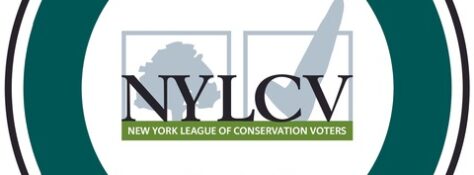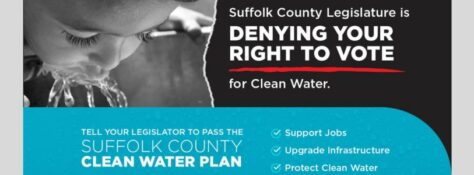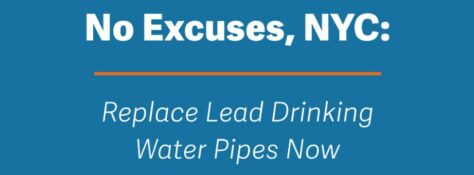The New York League of Conservation Voters is proud to announce endorsements for eight candidates for the Suffolk County Legislature. Following the failure of county lawmakers to pass the Suffolk County Water Quality Restoration Act, the New York League of Conservation Voters believes a new direction is needed on Long Island and that it’s time to elect a majority who will prioritize the health of its residents.
Learn MoreLast week Mayor Eric Adams launched the "Getting 97 Done" plan, aimed at cutting harmful carbon emissions from the city's large buildings. At the heart of this strategy is the implementation of Local Law 97, a groundbreaking law passed in 2019 with the goal of helping achieve net-zero emissions by 2050. Local Law 97, which was a major step in NYC's effort to combat climate change, mandates that the city's large buildings reduce their greenhouse gas emissions significantly.
Learn MoreBy Peter Aronson As final plans for congestion pricing begin to take shape, the New York League of Conservation Voters
Learn MoreThe average New Yorker produces an astonishing five pounds of trash per day, accumulating to a total of 15 million tons of waste statewide per year. Too much of that is from unnecessary packaging, a problem that will only get worse as the delivery economy continues to grow. While New York has made great strides in waste reduction in recent years, the New York League of Conservation Voters believes it can and must do more.
Learn MoreWhat seems like an environmental no-brainer in Suffolk County is in danger of not making it onto the ballot in November.
Suffolk County has a serious drinking water problem, with hundreds of thousands of residents having drinking water that exceeds the EPA’s PFAS chemical standards. On July 25, the Suffolk County Legislature has one last opportunity to vote to put the Suffolk County Water Quality Protection Act on the November 7 ballot and give voters the opportunity to decide.
Learn MoreNews
New York’s congestion pricing plan, which was just given the green light by the federal government, will at once protect public health, tackle climate pollution, and make much-needed investments in our public transit. Yet Governor Murphy, who claims to be an environmental champion, has gone the desperate route of litigation to stop this critical climate policy that has proven effective in every major city where it has been implemented. And it is particularly rich that the lawsuit comes on the heels of the New Jersey Transit voting to stick their head in the sand on a looming financial crisis that threatens the viability of the public transit system. When it comes to fighting climate change, investing in mass transit, and improving the daily commute for hundreds of thousands of people – many of them NJ residents – the contrast on the two sides of the Hudson could not be more stark: Governor Murphy is going to court while New York City goes to work.
Learn MoreAccording to a new report, No Excuses, NYC: Replace Lead Drinking Water Pipes Now, an estimated one in five New Yorkers, or 21% of the City’s residents, may be drinking water transported through lead service lines. The report also explains how the federal Lead and Copper Rule is not enough to protect from lead exposure; outlines the extent of the problem of lead service lines in New York City, including borough and neighborhood-wide data; identifies funding sources to pay for lead service line replacement; and examines Newark, New Jersey, as a case study for lead service line replacement.
Learn MoreBy Peter Aronson In its effort to remain a national leader in its fight against climate change, New York State
Learn More



